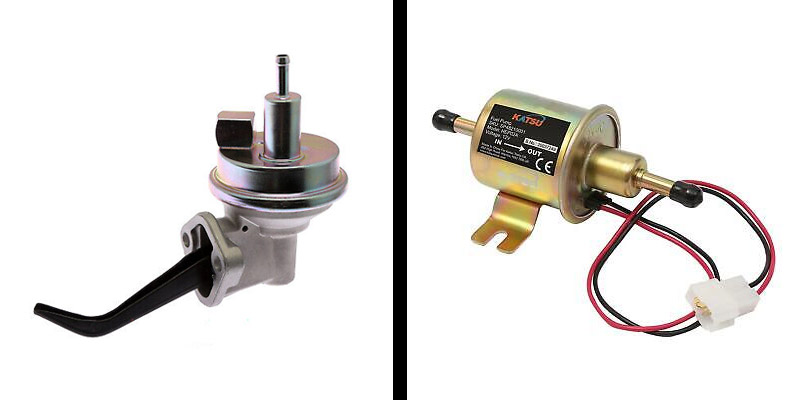In modern automotive engineering, the choice between mechanical and electric fuel pumps represents a significant design consideration that impacts vehicle performance, reliability, and efficiency. This comprehensive analysis examines the fundamental differences between these two fuel delivery systems, their respective advantages, and their typical applications in contemporary vehicles.
Mechanical fuel pumps, traditionally employed in carbureted engines, operate through direct mechanical linkage with the engine’s camshaft or timing chain. These pumps utilize a diaphragm or plunger system activated by an eccentric lobe, creating the necessary pressure differential to move fuel from the tank to the carburetor. Their straightforward design offers inherent reliability and simplicity, making them particularly suitable for older vehicles and basic engine configurations. However, their output pressure directly correlates with engine speed, which can lead to inconsistent fuel delivery at varying RPMs.
Electric fuel pumps, conversely, have become the standard in modern fuel-injected vehicles due to their superior precision and consistent performance. These pumps employ an electric motor to drive an impeller or turbine, delivering fuel at constant pressure regardless of engine speed. Typically located within the fuel tank, electric pumps benefit from the cooling effect of surrounding fuel and can maintain the higher pressures required by fuel injection systems. Their electronic control allows for sophisticated fuel management strategies, contributing to improved engine efficiency and reduced emissions.
The performance characteristics between these systems differ significantly in several key areas. Electric pumps generally provide more precise fuel delivery, maintaining consistent pressure across all operating conditions, which is crucial for optimal fuel injection performance. They also offer easier integration with modern engine management systems and can be activated before engine startup, ensuring immediate fuel availability. Mechanical pumps, while more limited in their capabilities, excel in simplicity and cost-effectiveness, requiring minimal maintenance and operating without electrical power consumption.
Maintenance considerations also vary substantially between the two types. Mechanical pumps typically exhibit longer service lives and can often be repaired with basic tools, though their accessibility may be limited by their engine-mounted location. Electric pumps, while generally reliable, may require complete replacement when they fail and can be more expensive to service. However, their in-tank location provides better protection from environmental factors and helps prevent vapor lock issues common to mechanical systems.
When considering future trends in automotive technology, electric fuel pumps clearly dominate the market due to their compatibility with modern engine management systems and their ability to meet stringent emissions requirements. However, mechanical pumps maintain relevance in specific applications, particularly in classic vehicles, simple agricultural equipment, and certain industrial applications where mechanical reliability takes precedence over precision fuel delivery.
This technical evolution in fuel delivery systems reflects the broader advancement in automotive technology, where electronic control and precision increasingly supersede mechanical simplicity. Understanding these differences enables engineers and maintenance professionals to make informed decisions based on specific application requirements and operational contexts.
